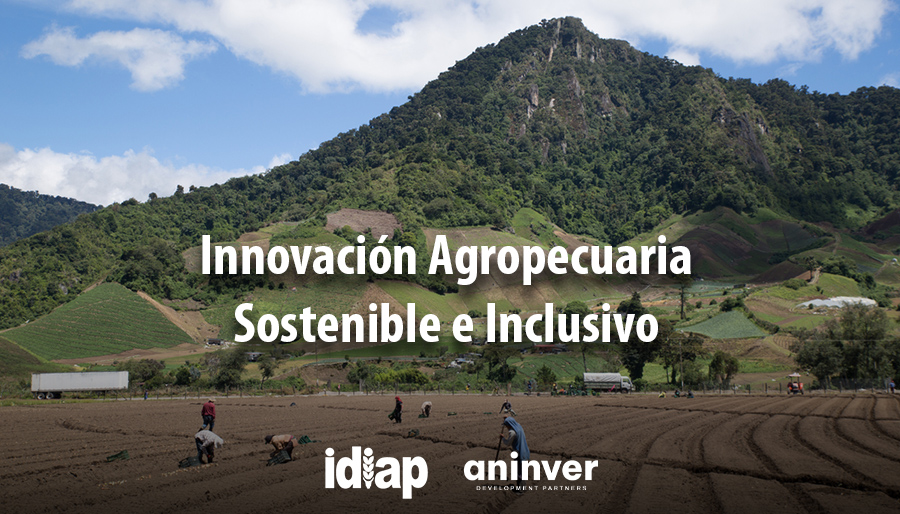Early-Life Famine Exposure, Obesity, and Testosterone Links – BIOENGINEER.ORG

Report on the Long-Term Health Impacts of Early-Life Famine Exposure and its Relation to Sustainable Development Goals
A recent study investigating the long-term consequences of the 1959-1961 Chinese famine provides critical insights into the developmental origins of adult obesity. The research highlights a significant association between nutritional deprivation during early-life developmental windows and the prevalence of obesity in adulthood, identifying testosterone as a key mediating hormonal factor. These findings have profound implications for several United Nations Sustainable Development Goals (SDGs), particularly those concerning health, nutrition, and equality.
Key Research Findings and Mechanisms
The study, published in the International Journal of Obesity, analyzed a cohort of individuals exposed to the Chinese famine at different life stages (prenatal, infancy, early childhood) and compared them to non-exposed groups.
Core Observations:
- Famine Exposure and Obesity Link: Individuals exposed to famine during prenatal and infant stages demonstrated a higher predisposition to adult obesity, measured by Body Mass Index (BMI) and waist circumference.
- Hormonal Mediation: The research identified testosterone as a partial mediator in this relationship. Males exposed to famine in utero or infancy exhibited lower serum testosterone levels in adulthood, which corresponded with increased general and central obesity.
- Sex-Specific Differences: The association between early-life nutritional deprivation, reduced testosterone, and adult obesity was more pronounced in males, underscoring the complexity of developmental programming and the need for gender-specific health analysis.
- Biological Pathway: The proposed mechanism involves the disruption of the hypothalamic-pituitary-gonadal (HPG) axis during critical developmental periods, leading to long-term impairment of testosterone synthesis. This hormonal imbalance affects fat distribution and energy metabolism, increasing the risk of obesity.
Implications for Sustainable Development Goals (SDGs)
The study’s conclusions directly inform strategies and underscore the urgency for achieving several key SDGs.
SDG 2: Zero Hunger
This research provides a stark illustration of the generational impact of failing to achieve food security and improved nutrition. The famine’s legacy extends beyond immediate mortality, creating long-term health vulnerabilities that persist for decades.
- Long-Term Consequences of Malnutrition: The study demonstrates that nutritional deprivation during the first 1,000 days of life (from conception to age two) can permanently alter metabolic programming, leading to future health crises like the obesity epidemic.
- Preventive Action: Achieving SDG 2 is not only a humanitarian imperative but a foundational public health strategy. Ensuring adequate nutrition for pregnant women and young children is critical to preventing a future burden of non-communicable diseases.
SDG 3: Good Health and Well-being
The findings are central to SDG 3, which aims to ensure healthy lives and promote well-being for all at all ages, with a specific target on reducing premature mortality from non-communicable diseases (NCDs).
- Understanding NCDs: The study contributes to a deeper understanding of the root causes of obesity, a major risk factor for numerous NCDs. It shifts focus from purely lifestyle-based interventions to a life-course approach that begins with prenatal care.
- Biomarkers and Early Intervention: Testosterone is identified as a potential biomarker for identifying individuals at higher risk of metabolic disease due to early-life adversity. This opens avenues for targeted screening and preventive strategies.
- Life-Course Health Perspective: The research reinforces the “Developmental Origins of Health and Disease” (DOHaD) concept, emphasizing that adult health is significantly shaped by early-life environmental conditions.
SDG 5: Gender Equality
The study’s discovery of sex-specific physiological responses to famine exposure highlights the importance of a gendered lens in health research and policy, a core principle of SDG 5.
- Sex-Specific Health Outcomes: The more pronounced effect on males via testosterone reduction indicates that health interventions may need to be tailored differently for men and women who have experienced similar early-life adversities.
- Equitable Health Research: Promoting gender equality in health requires research that actively investigates and accounts for biological and social differences between sexes to ensure that diagnostics and treatments are effective for everyone.
SDG 10: Reduced Inequalities
Famine and nutritional insufficiency are manifestations of extreme inequality. This study shows how early-life inequality in access to basic resources like food translates directly into long-term health inequalities.
- Breaking the Cycle of Inequality: Addressing socioeconomic and nutritional inequalities is fundamental to preventing the intergenerational transmission of health disadvantages.
- Targeted Public Health: Public health policies must prioritize vulnerable populations who have experienced nutritional adversity to mitigate the risk of future metabolic diseases and reduce health disparities within and among countries.
Conclusion and Future Directions
This research powerfully connects historical nutritional crises to the modern obesity epidemic, framing the issue within a developmental and endocrine context. The identification of testosterone as a mediating factor provides a tangible biological pathway that explains how early-life adversity can have lasting metabolic consequences. From an SDG perspective, the study serves as a critical reminder that goals related to hunger, health, and equality are deeply interconnected.
Future research should aim to:
- Investigate other hormonal pathways (e.g., insulin, cortisol) and their interactions.
- Utilize multi-omics approaches to build a comprehensive biological picture of famine’s long-term impact.
- Conduct longitudinal studies to establish clearer causal links and identify precise windows for intervention.
Ultimately, this work underscores that preventing future NCDs and achieving global health equity requires a foundational commitment to ensuring nutritional security and well-being from the very beginning of life, fully aligning with the holistic vision of the Sustainable Development Goals.
SDGs Addressed or Connected to the Issues Highlighted in the Article
-
SDG 2: Zero Hunger
The article is centered on the long-term health consequences of the Chinese famine (1959-1961). It directly addresses the impacts of “early-life nutritional deprivation” and “nutritional insufficiencies during pregnancy and early childhood,” which are core concerns of SDG 2’s mission to end hunger and all forms of malnutrition.
-
SDG 3: Good Health and Well-being
The research investigates the “global obesity epidemic,” a major public health challenge. By exploring the “developmental origins of health and disease” (DOHaD) and the links between early-life adversity and adult metabolic disease, the article directly contributes to the goal of ensuring healthy lives and promoting well-being. It highlights the importance of prevention and understanding the root causes of non-communicable diseases like obesity.
-
SDG 5: Gender Equality
The study explicitly points out “sex differences in the effects of famine exposure.” It notes that “male participants exhibited more pronounced associations between early deprivation, testosterone reduction, and obesity markers,” while females showed different patterns. This focus on “sex-specific responses” aligns with the principle of understanding and addressing health issues from a gendered perspective to ensure equitable health outcomes for all.
Specific Targets Under Those SDGs
SDG 2: Zero Hunger
- Target 2.1: By 2030, end hunger and ensure access by all people, in particular the poor and people in vulnerable situations, including infants, to safe, nutritious and sufficient food all year round. The article’s focus on the effects of famine exposure during “prenatal, infancy, and early childhood periods” directly relates to the vulnerability of infants and the unborn, underscoring the critical importance of this target.
- Target 2.2: By 2030, end all forms of malnutrition… and address the nutritional needs of… pregnant and lactating women. The study’s investigation into “prenatal and early postnatal influences on metabolic health” and “nutritional deprivation” demonstrates the long-lasting, generational impact of failing to meet the nutritional needs of pregnant women and young children.
SDG 3: Good Health and Well-being
- Target 3.4: By 2030, reduce by one third premature mortality from non-communicable diseases through prevention and treatment. The article’s entire premise is to understand the roots of obesity, a major risk factor for non-communicable diseases. The text states that “understanding the roots of obesity susceptibility is paramount” for prevention, directly supporting this target.
- Target 3.d: Strengthen the capacity of all countries… for early warning, risk reduction and management of national and global health risks. The research identifies early-life famine as a significant long-term risk factor for the global health risk of obesity. This knowledge contributes to risk reduction strategies by suggesting that “preventive efforts must begin much earlier than previously considered.”
SDG 5: Gender Equality
- Target 5.1: End all forms of discrimination against all women and girls everywhere. While not a direct measure of discrimination, the study’s finding of “sex-specific responses” to nutritional stress is crucial for developing equitable public health policies. Understanding that males and females can have different health trajectories from the same exposure helps to avoid one-size-fits-all approaches and promotes health equality.
Indicators Mentioned or Implied in the Article
- Prevalence of Obesity: This is the overarching public health problem the article addresses. It is implied through references to the “global obesity epidemic” and the study’s aim to understand “obesity susceptibility.”
- Body Mass Index (BMI): The article explicitly mentions BMI as one of the key “obesity indicators” measured in the study, referring to it as an “accepted proxy for general obesity.”
- Waist Circumference: This is another explicit indicator mentioned in the article, used as a measure of “central obesity” and “central adiposity metrics.”
- Serum Testosterone Levels: The study directly measured “serum testosterone levels” as a specific biological indicator. The article identifies it as a “promising biomarker” and a “partial mediator” linking famine exposure to adult obesity.
Table of SDGs, Targets, and Indicators
| SDGs | Targets | Indicators |
|---|---|---|
| SDG 2: Zero Hunger | 2.1: End hunger and ensure access to food for vulnerable people, including infants. | Famine exposure during critical developmental windows (prenatal, infancy) used as a proxy for severe malnutrition. |
| 2.2: End all forms of malnutrition, addressing the needs of pregnant women and young children. | ||
| SDG 3: Good Health and Well-being | 3.4: Reduce premature mortality from non-communicable diseases (NCDs) through prevention. |
|
| 3.d: Strengthen capacity for risk reduction and management of global health risks. | ||
| SDG 5: Gender Equality | 5.1: End all forms of discrimination against women and girls. | Analysis of “sex-specific responses” and “sex differences” in health outcomes following famine exposure. |
Source: bioengineer.org

What is Your Reaction?
 Like
0
Like
0
 Dislike
0
Dislike
0
 Love
0
Love
0
 Funny
0
Funny
0
 Angry
0
Angry
0
 Sad
0
Sad
0
 Wow
0
Wow
0



























;Resize=805#)



















































